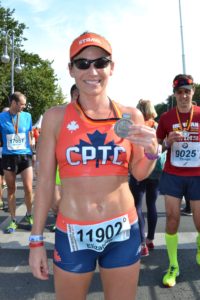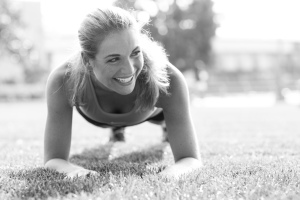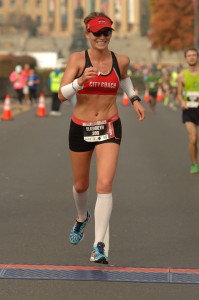Today’s myth is one I hope is something of the past, as recent research makes it quite clear that this myth is truly that. While we all probably know some elderly folks who seem pretty frail, delicate, and anything but athletic, the amount of badass strong senior citizens out there is growing. And while it’s probably unfair to compare my grandparents in their 90s to a 65-year-old marathoner, I can tell you that my grandparents were definitely not running marathons in their sixties. Or ever, actually. But I will tell you that my grandfather, who was active (a farmer) most of his entire life, didn’t become weak or frail until he was forced to quit farming and being outside much due to some other health issues. But the cool news is that the amount of masters athletes out there is growing, breaking records, kicking major ass, and taking name.
Some folks will suggest older folks protect their joints by not using them. Unfortunately, a body that isn’t used is naturally going to be weak and used to sitting around. We can all picture that old person sitting in a rocking chair, looking so delicate and ancient. That doesn’t have to be the way! A body in motion craves to be in motion. While it’s completely true that sometimes activities, intensity, and recovery will need to be adjusted as we age, there’s a ton of science backing up and supporting we be active our entire lives. In fact, some research suggest that exercising can have an anti-aging affect. Is sweating the fountain of youth?
Often non-impact and low-impact exercise has been recommended for older joints. There’s the common belief that older joints are fragile, and we need to be careful. While some folks may certainly have joint issues – cartilage, arthritis, other possible issues or aches – impact activities like running can be critical for staying healthy. The shock and vibrations high impact activities send through our body help with bone density. And some research shows that running will make an older person a more efficient walker – walking with the pep of someone decades younger. If you are already a runner, but perhaps struggling to deal with aging and how to adjust your training and goals, here are some helpful tips.
While running and cardio is good for us, there’s also a lot of evidence that strength training can do amazing things for our bodies as we age. This medical study has some very promising things to share about resistance training. While muscle mass typically declines as we age, strength training reduces the amount lost. This will help that individual feel stronger, have better balance and agility, and probably look and feel better in their skin. And more muscle will usually mean less body fat. Many studies suggest it is never too late to start strength training, and that while starting any new workout program takes some adjusting and some bumps along the way, a consistent strength training program can have incredible benefits.
So not only is there some pretty good evidence that exercise is good for an aging body, it is also good for the brain. Here’s an article suggesting that physical activity can slow the brain aging by 10 years! So not only may you have a strong and kick ass bod, capable of doing all kinds of things, you’ll have a brain to match it!






